

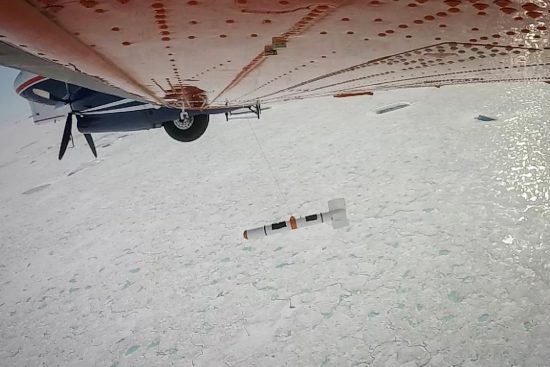
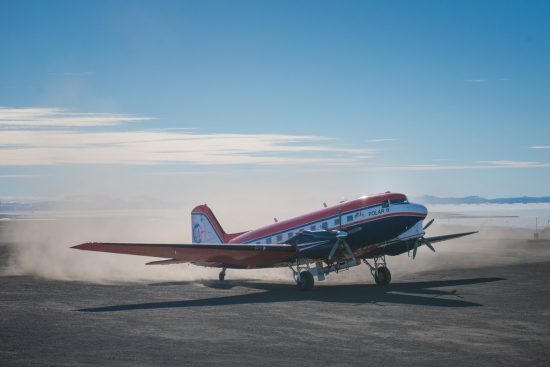
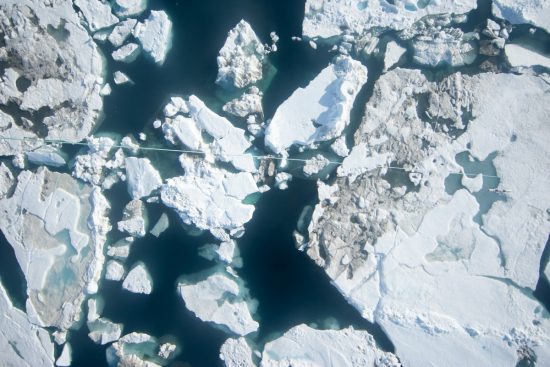
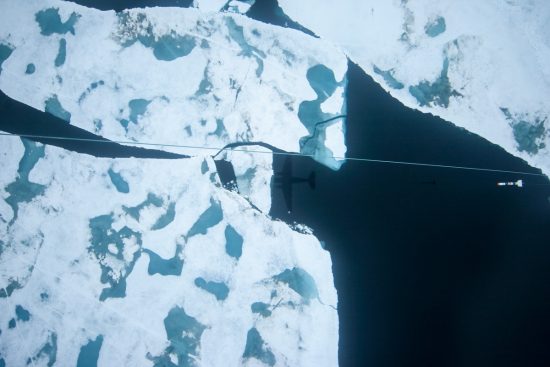
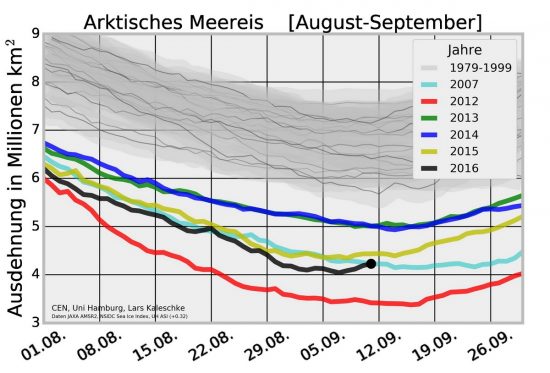
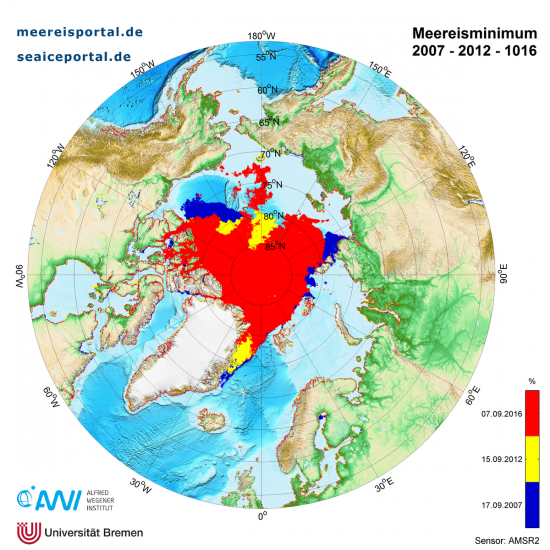
In September 2016, the surface of the Arctic sea ice shrank to nearly
4.1 million square kilometres – the second smallest recorded area since
satellites started mapping sea ice. This result is second only to the
3.4 million square kilometres of sea ice recorded in 2012.
“This is again a massive loss of ice in the Arctic,” said Prof Lars
Kaleschke of the University of Hamburg, in German.
This was confirmed
by Prof Christian Haas from the Alfred Wegener Institute (AWI), who
said the trend continued, referring to the fact that the Northeast
Passage and Northwest Passage are now simultaneously passable.
Every September, when the annual melt in the Arctic comes to an end,
the sea ice that remains will be measured. This is an important
indicator of climate change.
In the winter of 2015 and 2016, the
atmosphere was more than six degrees Celsius warmer than the long-term
average in the Arctic Ocean, said Prof Kaleschke from the Center for
Earth System Research and Sustainability (CEN) at the University of
Hamburg.
“Due to the higher temperatures, the ice growth is less.”
The thickness of the ice has been measured at different areas of the
Arctic using high-resolution aircraft observations and measurements.
Prof Haas described the newly formed, first-year ice as very thin,
barely more than a metre thick. This was in contrast with the perennial
ice in previous years, which was about three to four metres thick.
This
year, the ice loss was much delayed in June and July, but made its
appearance in August due to strong winds.
The University of Hamburg and the AWI have jointly developed a new
service issuing continuous ice thickness specifications.
For the first
time, the measurements of two ESA satellites – CryoSat and SMOS – were
combined. “We were able to see the end of the Arctic winter. The ice
was ten centimetres thinner than in previous years – a significant
reduction,” said Prof Kaleschke.
The area of sea ice was measured using satellite data. Prof Kaleschke’s
team managed to improve the process so as to allow an image to be
captured within exactly three kilometres. Thus it can be seen as north
of Alaska known as the Beaufort vortex the ice breaks up unusually
early, in April.
Based on the date, it was discovered that the area
north of Alaska, known as the Beaufort vortex, had broken up unusually
early, in April.
In May and June, the sea ice area was actually smaller
than ever.
This year, there was another unusual detail: Many areas of
open water were seen at the heart of the North Pole.
Since the end of August 2016, the Northeast Passage and Northwest
Passage became largely free of ice. Yachts and a cruise ship took the
opportunity to sail along the southern route of the Northwest Passage.
A crucial factor in the climate scenario, the Arctic sea ice serves as
an early warning system for global warming. In the 1970s and 1980s, the
minimum ice area in the summer still averaged about seven million
square kilometres.
According to Prof Kaleschke, the Arctic sea ice
retreat was a clear indication that global warming remained unchecked.
Learn about current sea ice development in the Arctic here.
 Mares
Mares 16th September 2016
16th September 2016